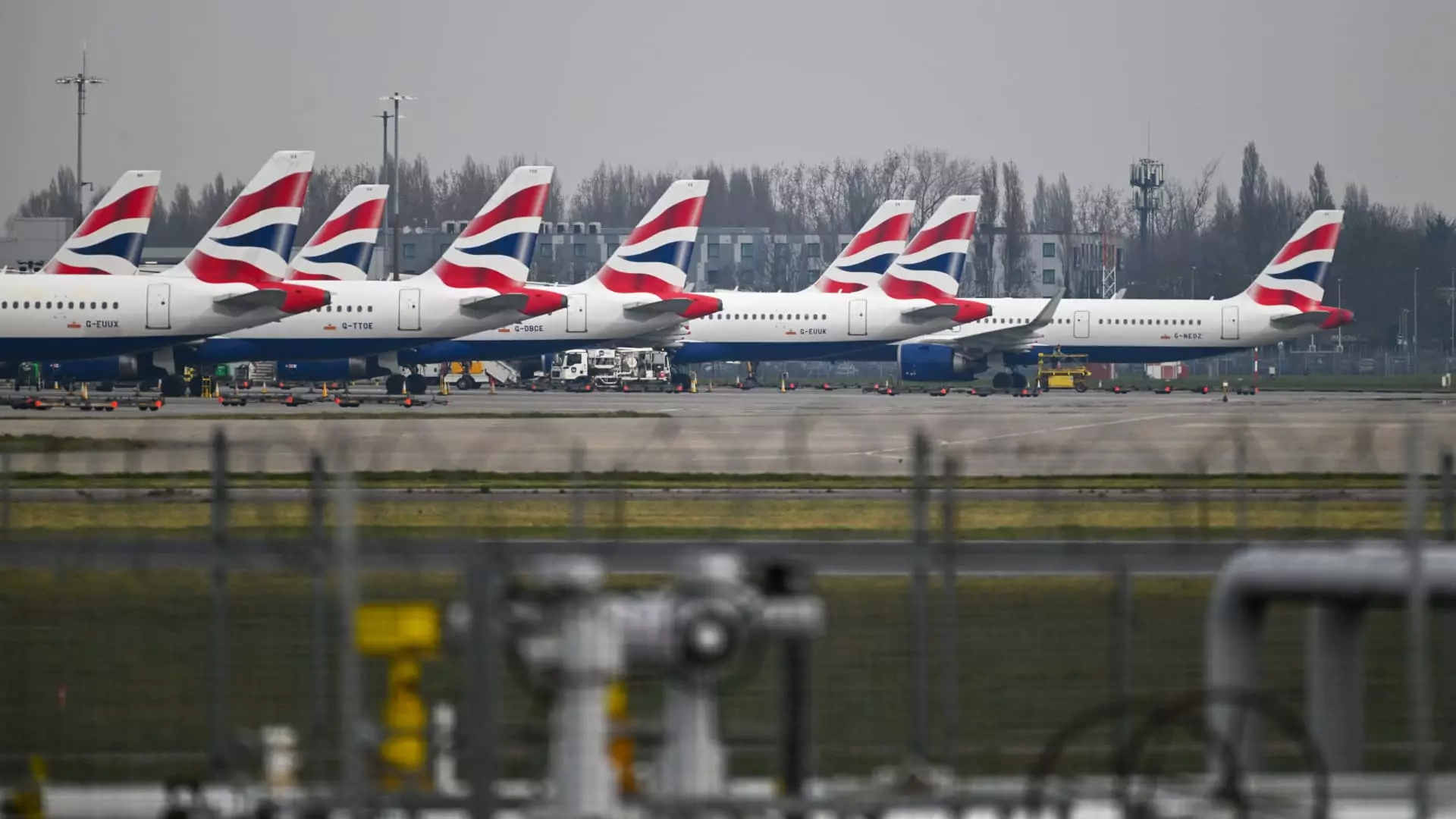On a seemingly ordinary Friday, London’s Heathrow Airport, the bustling nexus of international travel, was engulfed in chaos. An electrical fire at a nearby substation triggered a catastrophic power outage, leading to the cancellation of over 800 flights—a staggering disruption that left countless passengers stranded and confused. This debacle illustrates not only the vulnerability of critical infrastructure but also raises essential questions about how resilient we are in the face of unforeseen challenges.
A power outage of this magnitude is not something one typically associates with an airport that handled nearly 84 million passengers last year. Yet, just as the first flight since the incident took off late Friday night, many had already been caught in the crossfire of a situation that was beyond their control. This incident should spark a fundamental reevaluation of the systems that underpin our transportation networks and how we can better fortify them against such calamities.
Operational Carnage and Passenger Dismay
The aftermath of this incident was felt far and wide, with approximately 300 flight cancellations affecting inbound traffic and close to 500 flights ground to a halt before they could even leave the tarmac. British Airways bore the brunt of the fallout, losing more than half of its scheduled flights for the day. But the lack of foresight surrounding this event isn’t limited to just one airline; it questions the integrity of the entire travel industry. How did we let it get this far? The ramifications of this chaos rippled through an entire network of airlines, leading to a massive financial burden that has yet to be accounted for.
An airline’s duty doesn’t merely end at selling a ticket; they must ensure the infrastructure is in place to support the journey. Airlines and airport authorities should have plans to mitigate the effects of such disruptions. Instead, passengers were advised not to visit the airport unless instructed by their airline—advice that did little to quell the growing anxiety and frustration. Who is responsible when operational failures arise from infrastructural faults? The finger-pointing in the aftermath of this disaster is already beginning, and it’s a question that warrants scrutiny.
In the Cloud of Uncertainty: Where’s the Accountability?
As the dust settled, the response from various authorities bordered on disillusioning. While the Metropolitan Police assured the public there was no evidence of foul play, their decision to involve the counterterrorism division only served to heighten anxieties. This would suggest something far more sinister at play, yet the reality is likely a simple failure of infrastructure. The costs of these delays and cancellations should not solely fall on the airlines, something I wholeheartedly agree with. If the lifeblood of our transport system can be severed so carelessly, then stakeholders at all levels must share the responsibility for recovery.
Willie Walsh, the CEO of the International Air Transport Association (IATA), made a piercing point when he labeled Heathrow’s dependency on a singular power source as a “total planning failure.” His assertion resonates deeply. As we face the inevitable repercussions of climate change and an increasing number of unpredictable incidents, our reliance on outdated infrastructure becomes painfully evident. Who will be left to pay for this mismanagement when it all crashes down? Airlines are already struggling under the weight of operational costs, and this disaster could push them closer to the brink.
Financial Fallout: Can the Travel Industry Weather This Storm?
In the wake of this calamity, travel and tourism economists are left pondering the wider implications. Approximately 4,000 tons of cargo are processed through Heathrow daily, with a significant percentage transported in passenger aircraft. The disruption felt by individual travelers is merely the tip of the iceberg; supply chains that rely on this critical hub are equally at risk.
It’s imperative that we start discussing what accountability means within these systems. Passengers are often told to read the fine print, riddled with disclaimers that absolve airlines from compensating for extraordinary circumstances. Yet when we witness failures at the infrastructural level, a new conversation must emerge. Shouldn’t responsibility and compassion go hand-in-hand in a society that claims to value both?
We stand at a crossroads where both corporate and public sectors need to invest intellectual and financial resources to future-proof our airport infrastructure. Rather than passively accepting the status quo, we should advocate for systems that enhance resilience in the face of crises. Without a robust plan to withstand disruptions, our international airports will remain an open wound ready to bleed out at any moment, costing us dearly—both financially and reputationally.

